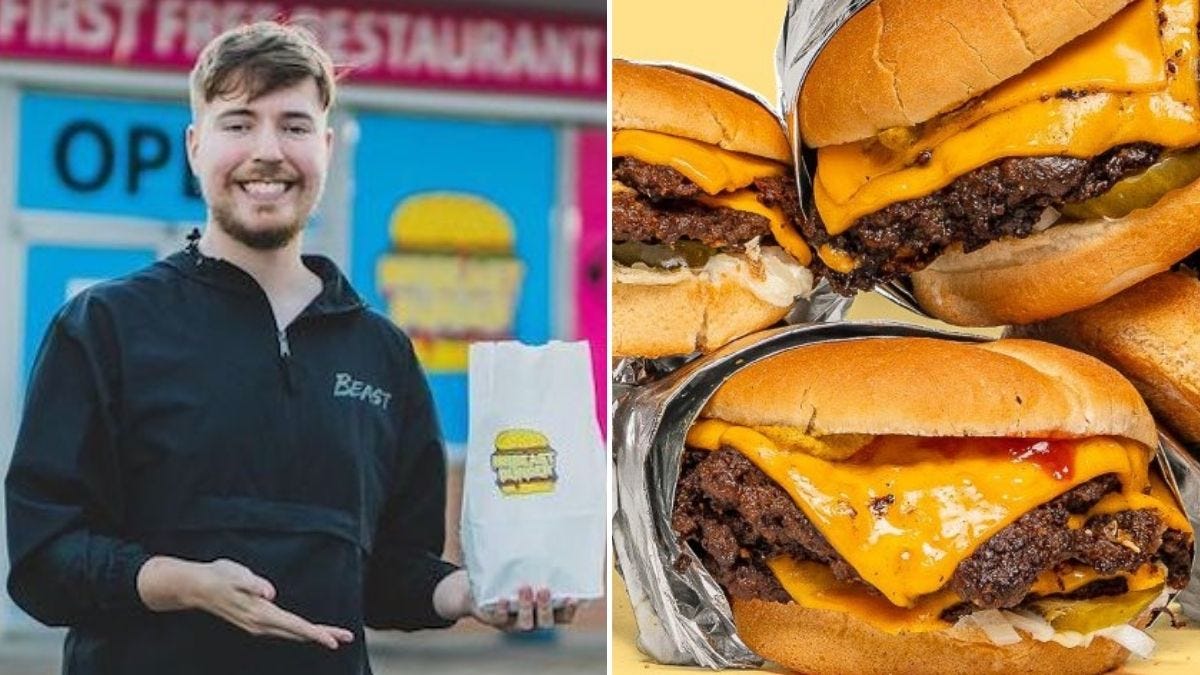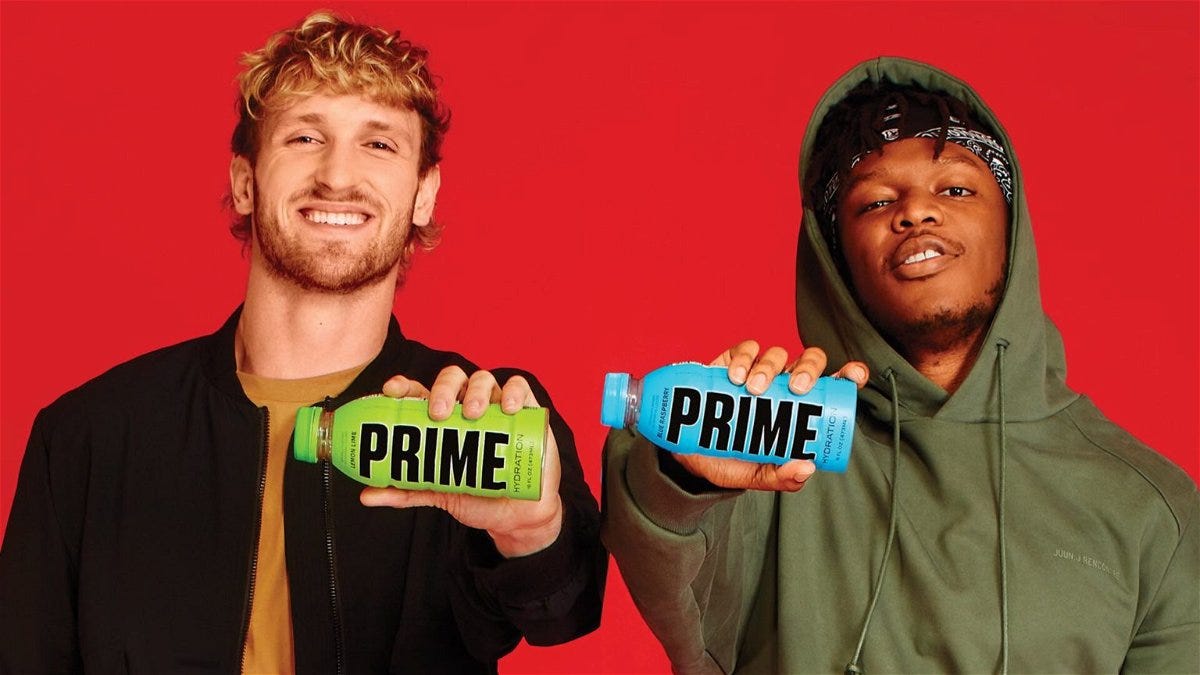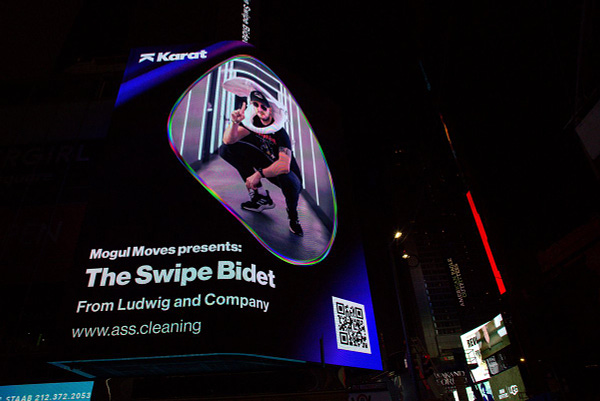#4 | Influencers will be the face of all consumer brands
& the trend to zero customer acquisition costs
The golden rule of start-ups is to at the very least achieve CLV > CAC.
(CLV = Customer Lifetime Value, CAC = Customer Acquisition Cost)
If your CLV < CAC, you’re unprofitable and should figure out how to extract more value from the customers you’re acquiring, or choose a more cost-efficient way of acquiring them (among other things).
If your CLV >> CAC, you might be spending too little and missing out on acquiring profitable customers. A “healthy” ratio for SaaS companies tends to be CLV = 3x CAC.
Many young post-revenue start-ups easily spend 15-25% of revenues on CAC (promotions, discounts, marketing, etc.) and this proportion decreases as the company grows. As a benchmark, Netflix spent $2.5B just on marketing in 2021 with ~$30B in revenues - that’s 8.4% of revenues!
Yet, there is a trend for some “start-ups” to have zero marketing and advertisement, and almost zero CAC.
The case for zero CAC
How do you achieve zero CAC?
Have an established audience who would buy anything you influence them to (or ask nicely).
For B2B companies, the “playbook” is to create a great product and price it in such a way that you have sufficient margins to pay a salesforce to distribute your product. This works because businesses tend to be less price sensitive.
For B2C companies this doesn’t work. Retail consumers are highly price sensitive and tend to have high churn. B2C only works if you can find a low cost, scalable distribution channel which is sustainable.
I have a very strong belief that in the next 30 years or so, all traditional brands are going to die. With the power of democratised media, there are 100,000s of individuals who have created their own brand due to their content they’ve produced on Twitch, Youtube, Twitter, podcasting… and they become the trusted source of influence.
David Friedberg, All In Pod (Sep 10, 2022)
We’ve seen this trend in the early days of Youtube with creators selling products relevant to their channels. These are usually products relevant to their content, such asmerchandise, fashion or cosmetics:
Jeffree Star (beauty youtuber, 16M subs) who launched Jeffree Star Cosmetics which does ~$100M annually and products in Walmart
Charlie d’Amelio (18-year-old with 150M TikTok followers, most followed in 2020-22) and Dixie d’Amelio (21-year-old with 58M TikTok followers) are sisters who launched their brand Social Tourist, under Hollister.
Fiona Frills (19-year-old beauty Youtuber with 1M subs) who launched Frilliance, also available at Walmart
… and every other Youtuber selling merchandise. It’s a really saturated industry which with many whitelabel companies running the show, such as Spring (formerly known as TeeSpring), FourthWall (used by Philip deFranco, MKBHD, DrMike), and Represent (used by Pewdiepie, Leonardo DiCaprio, Kobe Bryant)
The tale of MrBeast
The prime example here is MrBeast. If you don’t know MrBeast… I think you just gave away your age. I’d reckon a majority of under-30’s would know who MrBeast, but not Obama.
For the boomers, MrBeast (or Jimmy Donaldson) is the most subscribed individual creator on Youtube as of November 2022 with 113M subscribers, surpassing Pewdiepie who’s held the top spot since 2013 (nine years now!). He started off his career making videos such as “Counting to 200,000” and “Saying Pewdiepie 100,000 times”. Now he makes up his own competitions and gives away up to $1M per video to the winners of each video. These include “Last to take hand off jet, keeps it”, “I gave my 100,000,000th subscriber an island”, and the most viral “$456,000 Squid Game in real life”.
The difference between MrBeast and everyone else is that it’s not clickbait. He actually gives the winner the money. He re-invests every penny he earns from his videos back into the next video. He also has an insane work ethic, but that’s a story for another time.
The reason we’re talking about MrBeast is because he launched his burger chain, MrBeast Burger in 2020 through a partnership with Virtual Dining Concepts through cloud kitchens. They now serve the US (600+ locations), Canada, UK (30+ locations) and UAE. They sell through UberEats and their own app. MrBeast Burger tweeted in July that MrBeast Burger "has shared over $100 million in revenue with restaurants across America."
The burger concepts are… pretty ridiculous. The burgers are named after each “character” in MrBeast videos. The burgers range from “Beast Style”, which is a classic burger with a smashed patty, to “Karl’s grilled cheese sandwich”, which is 3 slices of American cheese on an inverted bun.
I’ve taken the liberty to try them out… let me report back that they’re not great, probably similar to a McDonald’s, although priced at a Five Guys / Shake Shack level.
Last month, he opened his first physical MrBeast Burger restaurant in the newly opened American Dream Mall in New Jersey, drawing 10,000+ visitors to the location on opening day (see 11:15 of this video). There were people queueing 48 hours to be the first in line.
In January, MrBeast debuted his own line of chocolate snacks called Feastables, which apparently made over $10M in its first few months of operations. They raised $5M in January at a $50M valuation, from 776, Shrug Capital and Sugar Capital, per Insider.
MrBeast is also raising $150M at a $1.5B valuation, potentially making him a unicorn founder.
The tale of Logan Paul and KSI
Anyone who’s been watching the Youtube scene over 2016-18 would have known the infamous Logan Paul, one of the fastest-growing Youtubers at the time. His claim to fame was through his daily vlogs, cringey diss tracks which were so bad that they went viral, and let’s not forget, Japan. Fast forward to late 2019, he challenged British Youtuber KSI to a professional boxing match not once, but twice.
Guess what happened after? They launched an energy drink, Prime together.
In June this year, Logan had revealed on his podcast IMPAULSIVE that Prime made $10M sales within 2 months of launching Prime. This was before they even launched in the UK. In the US they’re in Target, Kroger, CVS, etc. and in the UK they’re in Asda, but you won’t be able to find any there as they’re always sold out. In fact, Asda restricts customers to 3 bottles per person. It’s a £2 drink being sold for £10,000 on eBay.
“For beverage products, you need to get to $50M sales. Because at $50M you’re starting to encroach on shares of the big boys and what happens then is they’ll buy you. On the way to $50M, they’re gonna do whatever they can to crush you and get you off the shelf” - Kevin O’Leary on Impaulsive
If Logan and KSI maintain this pace and potentially solve some manufacturing (or distribution) problems in the UK to keep up with demand, they’ll easily hit the $50M mark within a year of launching. If they get the right people behind the wheel to grow the company, it wouldn’t surprise me if they reach 9-digit annual sales. This also puts them in prime position (pardon the pun) to be acquired by a larger beverage company with precedence being set by the likes of PepsiCo who acquired Rockstar Energy for $3.85B in 2020, or Coca Cola who has a 19% stake in Monster Beverage.
The tale of Ludwig Ahgren
Now this is a much less well-known online persona - Ludwig Ahgren. He started off streaming on Twitch and now streams on Youtube. Ludwig’s rise to fame was his “sub-athon” where viewer donations lengthen a descending timer that determines the length of the stream. He received 282K subs, profiting $200K while streaming non-stop (including eating and sleeping on-stream) for 30 days.
You could say that Logan Paul & KSI started selling energy drinks because they were doing boxing - somewhat relevant. Well, Ludwig… this guy started his bidet company. Yes, you heard that right.
This is how he announced it.
Ludwig worked with a South Korean factory to design, manufacture and ship his bidet, Swipe, because he, quote, “has a dream that every American has a clean ass”. The Swipe goes for $50 while the Swipe+ which has a heated seat and a remote control, goes for $500.
So far, no sales numbers are out yet but I’d find it hard to believe that this is scalable, given bidets are largely a one-off purchase and distribution of such a product must be a nightmare requiring relatively high manufacturing costs and shipping from South Korea. Ludwig isn’t a stranger to entrepreneurship though, he previously launched Offbrand, a creative studio which makes events, streams, shows and content people remember.
Even outside of the three prime examples above, we’re also seeing…
Kim Kardashian launching her own Private Equity firm, SKKY Partners, to invest in high-growth companies in consumer products, media, hospitality and luxury. Makes total sense for her with her direct communication channel with 335M Instagram followers
US casino operator Penn Entertainment acquiring Bar Stool Sports for $387M. Bar Stool Sports was founded by David Portnoy back in 2003 when he was reviewing pizzas. Now, they produce numerous podcasts, Youtube content and streaming and video-on-demand content
Canadian-American Youtubers The Nelk Boys launching their own alcohol beverage, the Happy Dad Hard Seltzer
Personal finance & real estate investing Youtuber Graham Stephan launched his coffee & tea brand, Bankroll Coffee. 16k customers $100k sales with no ads with a 58% returning cyustomer rate
What does this mean for us?
We are moving towards a more “decentralised” and “community-driven” age of consumption.
If you’re a consumer business, you should start thinking about how to build a “persona”. Every consumer business ultimately needs to become a content business - you either produce or buy a content business (e.g., Bar Stool Sports) or your company will slowly fade into irrelevance. The younger generation idolises Youtubers and Instagram influencers rather than faceless brands.
Even before Kanye West (or Ye) was dropped by his sponsors Adidas and GAP, he was already planning to launch his own independent brand.
If you’re an investor, you should look at companies fueling this “creator economy” trend, whether it’s someone like Genflow who’s helped Logan Paul and KSI monetise their audiences through highly customised experiences, or companies in emerging markets doing whitelabel products for influencers.
If you’re a creator, you should think about building your audience in a niche and diversify your revenue streams through some creative entrepreneurship. You could first start selling products from your niche and as you grow your audience, you can start selling non-related products - whether it’s energy drinks or bidets.
What does this have to crypto? Probably nothing, but if you have an idea, feel free to reach out on Twitter @tzedonn:









